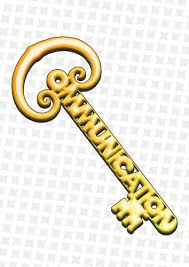Planning for Success
Cox (2009) tells us that approximately forty percent of project time should be spent during the planning process (p. 62). Spending the right amount of time on the plan is crucial for the success of the project. Allen, Alleyne, Farmer, and McRae (2014) state, “The survey revealed that the Project Management Plan was the most important tool [for project success] since it documents the goals, objectives, and scope of the project” (p. 14). The project manager must know which deliverables will and will not be included in the plan. The purpose of defining the scope is to detail the project’s objectives, deliverables, and requirements (Cox, 2010, p. 67). The project manager must describe what will and will not be included in a project in order to ensure project success and prevent assumptions from destroying the project.
Communication is Key
Cox (2009) stresses the importance of creating appropriate and positive expectations for a project before communication even begins. The project manager can achieve this by projecting credibility, creating a climate, and previewing the content (Cox, 2009, p. 155). In terms of credibility, stakeholders need to know that the project manager has expertise in the field and in the project they are planning. They also need to trust the project manager. All communications, whether written or verbal, need to be professional and free of errors. Finally, information needs to be communicated in a dynamic way (Cox, 2009, p. 156). The project manager must decide what kind of learning climate they want to achieve. Cox (2009) suggests doing an icebreaker or team builder to establish a comfortable and safe environ ment for learners (p. 156). Finally, it is a best practice to tell the learner what is coming. This way, they can form realistic expectations in their mind and the project manager can avoid confusion.
ment for learners (p. 156). Finally, it is a best practice to tell the learner what is coming. This way, they can form realistic expectations in their mind and the project manager can avoid confusion.
However, there are still barriers to communication, which include: perception, beliefs, attitude, values, and noise (Cox, 2009, p. 154-5). A person’s perception is their reality, and individuals view events differently. We bring our personal beliefs, attitudes, and values to every event and often times these are biased and subjective. Cox (2014) states, “As this avalanche of internal communications grows, so does the concern of administrators who wonder if what they are trying to communicate to their stakeholders is actually received” (p. 34). Therefore, it is critical that schools understand and develop a culture of effective professional communication.
Personal Reflection
I am learning through this course just how critical the planning stages of a project are. In the past, I have initiated projects without naming stakeholders, or spending sufficient time planning. This has led to a waste of time, money, and energy. One of my biggest takeaways is how incredibly important naming a project’s deliverables and non-deliverables is to having a successful project. Spending the time listing these two categories ensures that no trainee will be confused about project expectations. Defining the scope in detail means the project will be accomplishable.
I anticipate some communication issues during my project for this class. Since I considered them during the planning stages, I will be able to address them effectively. Cox (2014) gives some great suggestions for meaningful communication during a project, which include: evaluating your own strengths and weaknesses, analyzing stakeholders, having a clear purpose, managing your messages, building credibility, seeking surprise, analyzing delivery modes, keeping communication simple, being truthful, and making a plan for communication ahead of time (p. 35-6). Since I am the project manager I will have to be aware of my own weaknesses in terms of communicating information. I will also have to know my stakeholders so that the training is effective.
This website provides scope statement directions, examples, and helpful links:
http://www.brighthubpm.com/project-planning/57950-example-and-evaluation-of-project-scope-statements/
This website gives useful tips to help you avoid resistance to technology projects:
https://www.bdc.ca/EN/articles-tools/technology/invest-technology/Pages/how-overcome-resistance-your-tech-project.aspx?caId=tabs-3
References
Allen, M., Alleyne, D., Farmer, C., McRae, A., & Turner, C. (2014). A framework for project success. Journal Of Information Technology & Economic Development, 5(2), 1-17.
Cox, A. (2014). Increasing purposeful communication in the workplace: Two school-district models. Delta Kappa Gamma Bulletin, 80(3), 34-38.
Cox, D. (2010). Project management skills for instructional designers: A practical guide. Bloomington, IN: iUniverse, Inc.

